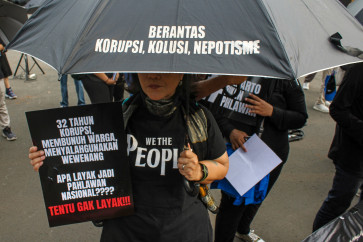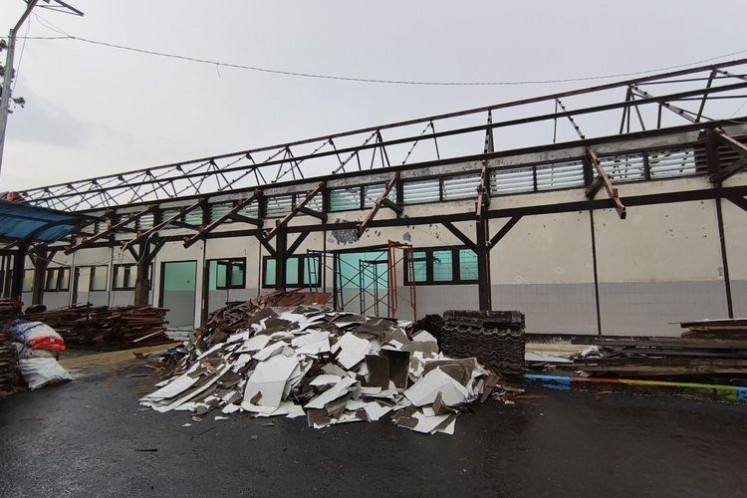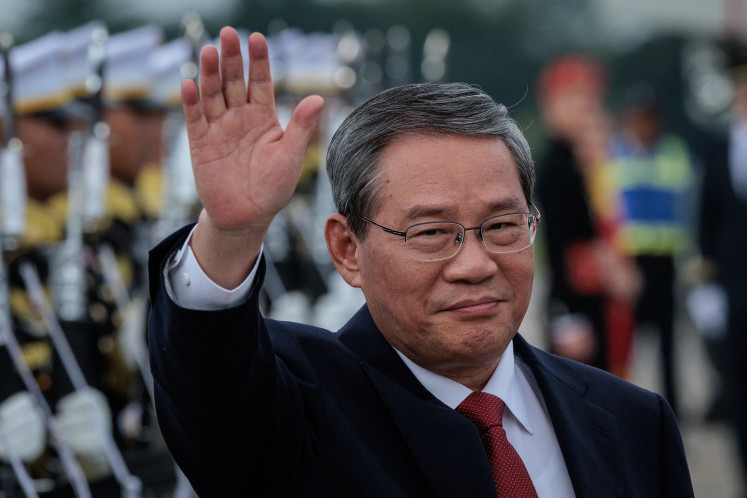Toward reputable universities
In May, the Asia University Rankings revealed the 350 best colleges and universities in Asia, featuring institutions from 27 countries
Change text size
Gift Premium Articles
to Anyone

I
n May, the Asia University Rankings revealed the 350 best colleges and universities in Asia, featuring institutions from 27 countries.
Japan tops the list with 103 universities in the ranking, while China comes second with 72 institutions. India is the third-best represented country with 49 universities.
The Asia University Rankings are based on the same 13 performance indicators as the Times Higher Education World University Rankings, which cover performance indicators in teaching (including staff-to-student ratio and institutional income) research (volume, income and reputation), citations (research influence), international outlook (international-to-domestic student ratio, international-to-domestic-staff ratio, international collaboration); and industry income.
Not a single Indonesian university is in the top 10 or 20 best universities, despite having the most higher education institutions across Asia.
In 2017, the country had almost 4,500 such institutions, while European Union universities totaled 3,300.
The real challenge for Indonesia’s higher education management is right sizing this extremely large number to some 2,000 and improving their quality. Since the previous education and culture ministry was divided into two in 2014, with one part becoming the Research, Technology and Higher Education Ministry, university management policy has been significantly reformed.
In the past, the university senate, as the supreme academic body with responsibility for superintending and regulating teaching, research, community services and discipline at the university, was totally under the rector’s control.
The rector was both university senate chair and university president. The rectorate is the super body, while the senate is a complimentary institution.
To create a conducive academic environment, and to ensure accountability and healthy checks and balances to run the university’s tri-dharma (three obligations)of teaching, research and community services, the university senate would have to be empowered to possess equal authority to the rectorate. The following are a few key areas that universities could address.
First, like at other reputable universities, the university senate has to clarify its mandate.
Generally, in the EU or United States, the university senate’s role includes: directing, regulating and promoting the teaching and research of the university; discussing strategic issues on learning, teaching and research development; setting the regulatory frame work and strategy, etc.
[...] since its inception in 1968, Indonesia has hosted the Southeast Asian Regional Center for Tropical Biology in Bogor [...]
Similar to the state, separation of power and checks and balances would help avoid autocracy and promote transparency and accountability in the university’s management.
Second, to transform Indonesia’s thousands of higher education institutions into reputable universities, the university senate at all public universities could replicate the EU Bologna Process. This includes cooperation in facilitating students’ mobility through their qualifications and a credit transfer system.
Indonesian universities could adopt such modality for their quality assurance. Papua students for example, could access quality studies at other top state universities through a credit transfer system to other state universities.
Third, similar to the model of the Southeast Asian Ministers of Education Organization (SEAMEO) in developing its centers of excellence, university senates across public universities could also develop their respective centers of excellence to unleash their potential.
Today, SEAMEO has 21 specialist centers of excellence that undertake training and research programs in various fields of education, science and culture to serve all ASEAN member states.
For example, since its inception in 1968, Indonesia has hosted the Southeast Asian Regional Center for Tropical Biology in Bogor, West Java, with expertise including studies on forestry, pests and aquatic biology.
Similarly, Brunei Darussalam hosts the Center for Vocational and Technical Education and Training, established in 1990.
Indonesian universities could develop such centers that meet resource availability, expertise and willingness to be a model institution to serve and facilitate other universities or higher education institutions within relevant economic corridors. Udayana University in Bali, for instance, could be the center of excellence for tourism and hospitality studies, while a center for mining studies could be established at Kalimantan or Papua universities.
University senates, therefore, could be a driving force to gradually bring about reputable Indonesian higher education institutions not only in Asia but in the world.
With separation of authority between the rectorate and university senate, universities in Indonesia would have much better transparency, accountability and good governance.
_______________________
The writer is a professor in education studies at the State University of Jakarta (UNJ).









